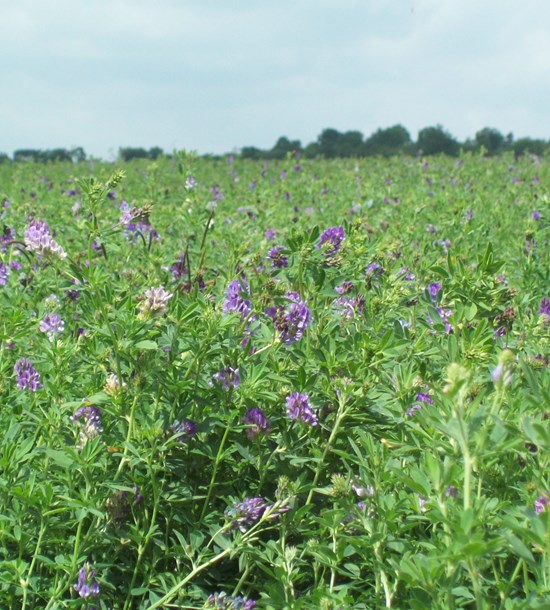In recent years, discussions have increased around the bioeconomy and its potential to drive a transition to sustainable industry practices. Around the world, bioeconomy-related policy strategies have been developed and adopted.
As defined by the European Commission, “bioeconomy” provides a wide umbrella term in which industries of agriculture, food, fisheries, forestry, bioenergy and biobased products are mobilised around policy goals of sustainability, circularity, as well as food safety, food security, and nutrition.
While many players in the food manufacturing sector will recognise themselves in these definitions and goals, how do these bioeconomy-driven initiatives provide added value to existing food industry innovation ecosystems? How can food industry players take an active role in the implementation of these initiatives?
We talked to Maria Isabel Cisneros, International innovation project manager for Vitagora, member of the ShapingBio consortium, and Honoré Labanca, agronomy and animal nutrition engineer for La Coopération Agricole - Luzerne de France.

From the left: Honoré Labanca and Maria Isabel Cisneros.

Maria Isabel Cisneros: The “bioeconomy” literally means using renewable biological resources from land and sea, like crops, forests, fish, animals and micro-organisms to produce food, materials and energy. Fundamental to the bioeconomy is the notion of goals related to a circular, low-carbon economy, as well as food-specific goals of nutritious, safe food in sufficient quantities for our growing population.
Where the bioeconomy goes beyond existing agrifood industry structures and policies is the idea that cross-sectoral initiatives can strengthen and accelerate innovations and lead to lasting impacts. This requires creating bridges between food and non-food industries, as well as developing a coordinated approach to policies and innovation support. This is where the ShapingBio project comes in. Our goal is to develop recommendations aligning policies and actions to realize the cross-sectoral potential of the bioeconomy. One of our first actions has been to get insights from a variety of bioeconomy stakeholders on their needs related to R&D innovation support and infrastructure.
Honoré Labanca: There are a vast number of topics where bioeconomy innovation could accelerate advances for the food industry. Extraction is a major topic, how to create value from different ingredients, especially on the subject of plant proteins or recycled materials. Other cross-sectoral subjects, not specific to the food industry but with a large potential for impact are energy production technologies and micro-methanisation on a factory scale, or energy production from organic waste.
Honoré: The first challenge is to increase awareness of what the bioeconomy is. Within the food industry, in particularly my sector which is an established sector (unlike more recent biotech sectors), bioeconomy is a relatively new addition to our vocabulary. Awareness is growing, but there is a need for structuring at the level of government where “bioeconomy” is often poorly defined or suffering from a lack of visibility. Research in the field of bioeconomy could also benefit from improved visibility and structuring at a national level.
Maria Isabel: One of the challenges identified among the stakeholders specifically in the agrifood sector was the creation of links between all actors involved, for example between primary production and manufacturing. Farmers and primary producers have many by-products with a huge potential for upcycling and extraction.
Consumers should also be involved in these approaches – strategic communication work should be done to help all actors gain understanding (industrial actors, political actors, end-users, finance).
These are some examples of answers and challenges identified at this stage that confirm the gaps to be addressed that were identified in the ShapingBio project. Indeed, the four main topics covered are 1) funding, 2) public policies and governance, 3) collaboration and 4) applied R&D and technology transfer.
Honoré: In my opinion, more transparency is needed in publicly funded research activities. Ideally, this means having better and more centralised access to information on projects with contacts and project summaries and outcomes.
Public-research partnerships are key to driving innovation. But the frameworks for these types of partnerships are very complex. The contractualisation part of the process is slow and has put us off from responding to certain calls for projects requiring a public sector partner. Confidentiality remains an issue, as when a public institute is a partner the subject must be open.
Finally, as awareness grows, I also look forward to seeing flagship events emerge, like the SIAL for the food industry, but dedicated to bioeconomy activities and stakeholders.
Maria Isabel: What’s most important in this initiative from my perspective of working with the food industry, is to integrate these food industry players who do not yet feel concerned by the topic of the bioeconomy.
There is a huge potential for creating synergies between the various players of this ecosystem that are often directly concerned without being aware of it. We aim to identify these opportunities and to raise awareness about how to take advantage of the momentum provided by these initiatives.
Honoré: The main impact that I would look for is avenues for better valorising the biomass produced by my industry. In lucerne production, for example, there is potential for green energy production to fuel our own machines, but also for transforming lucerne protein into a source for human nutrition. Better coordination of bioeconomy innovation could lead to the development and optimisation of the technologies needed for better valorisation of the various types of biomass.
Maria Isabel: We are looking forward to the comprehensive overview that ShapingBio will provide of the current challenges, actors, policies and instruments related to the bioeconomy sector. The discussions and closer collaborations developed between members of the consortium is already a huge step in the right direction.
We are also particularly looking forward to the concrete actions in terms of events and matchmaking that will be conducted to create new synergies and cooperations between all involved actors. These collaboration opportunities, as well as a better overview of financing opportunities, will be of great benefit to entrepreneurs, and innovators developing solutions to the important challenges that the bioeconomy addresses.